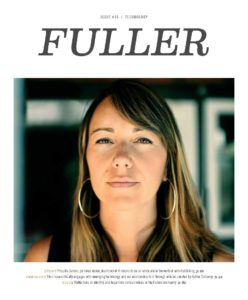In 2013 I was invited to be the full-time worship director at a church in downtown Los Angeles. It was a dream position for me—not only because of my background as a musician and worship leader, but also because I had been prayerfully considering a call to vocational ministry. The only problem was that my wife and I were living on the East Coast at the time, and all the seminaries I had interest in attending happened to be there. I was thankful when I discovered that one of these seminaries offered a distance education option that would allow me to complete my degree online. I could accept the position in Los Angeles and still get the education I wanted at the institution of my choice.
On the surface, the online program seemed nearly identical to the offering at the seminary’s physical campus. But this was precisely the problem. In an attempt to maintain the “purity” of the educational experience, the institution had chosen not to evolve with the medium. All the courses offered were carbon copies of the courses one could take in person. The format and structure of the courses remained the same, and all lectures were simply low-quality audio recordings taken directly from the classroom. The little online interaction that did exist was extremely challenging to navigate due to the school’s rolling registration system, which allowed students in the first week of a course to post in the same discussion forums as those finishing the last week. Trying to digest hours upon hours of audio lectures without the ability to ask questions or engage in thoughtful discussion was slowly taking its toll on me, and within a few years of the program, I found myself completely disconnected from my learning.
Fast forward to the fall of 2018 when, after much prayer, I made the decision to transfer to Fuller Seminary in Pasadena. Disillusioned by the idea of virtual education altogether, I believed the only solution that remained was to immerse myself in a “real” learning environment surrounded by professors and like-minded peers with whom I could explore my calling and process my learning. One can imagine my disappointment when I discovered that the first course that caught my eye—the Worship, Theology, and the Arts Touchstone—was only offered online. Still, the title of the course alone warranted the risk of being let down again, and considering I was already taking two classes on campus, I figured I had nothing to lose.
What emerged from my experience, however, was a complete overhaul of all of my existing biases and preconceived notions about web-based instruction. I realized that not all online classrooms are created equal and that there is a way to create a dynamic, embodied learning environment in the digital realm if we are willing to rethink how to utilize this unique space.
The following are five features of that Worship, Theology, and the Arts Touchstone course that speak to the ways in which Fuller’s online educational culture is already reimagining virtual education in the 21st century.
- The course unfolds in real time (rather than simply repurposing old and outdated content).
- The course blurs the line between teacher and student (rather than maintaining a strict hierarchy between the student and the “sage on the stage”).
- The course deepens student interaction by limiting it (rather than operating in the manner of massive, open online courses).
- The course uses every opportunity to incorporate a human touch (rather than assuming digital technologies inhibit genuine human interactions).
- The course evolves (rather than remaining forever stuck in the format or modality that preceded it).
In my radically different online learning experience at Fuller, I learned there are numerous ways to deliver high-caliber education that fully leverage (rather than acquiesce to) digital learning management systems. This is not to say that there is a silver bullet that will magically solve all of the challenges that come with an online learning environment. After all, just like a geophysical classroom, there is more than one way to set up an educational experience in the digital realm, and not all of these are ideal. But virtual education no longer has to be a lesser alternative to a “real,” in-person education. Sometimes it’s even better. Technology has given us the means to customize a powerful online learning experience that can be just as embodied as what one might find in a physical classroom setting—if not even more so.


